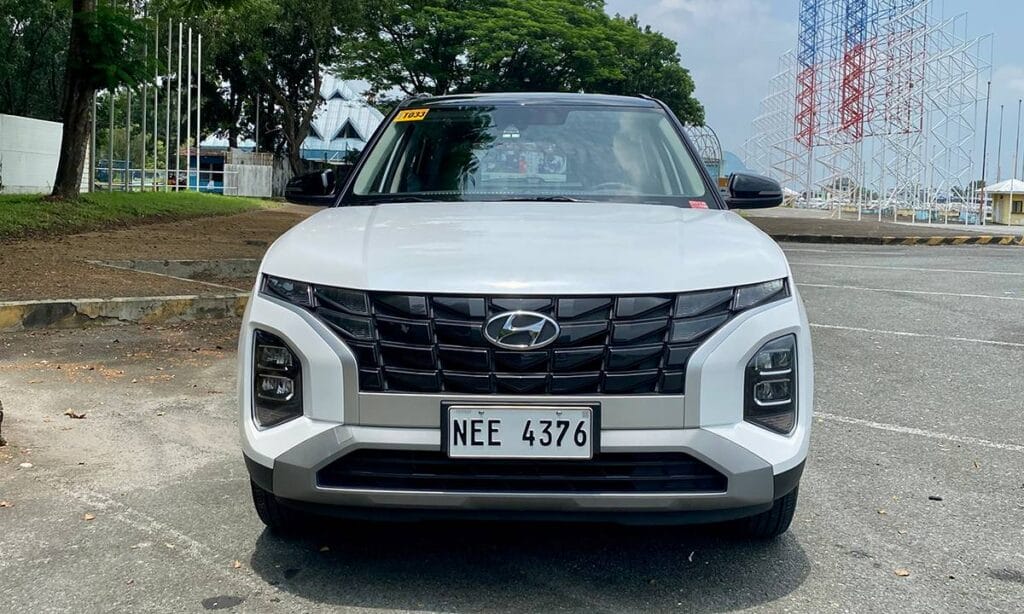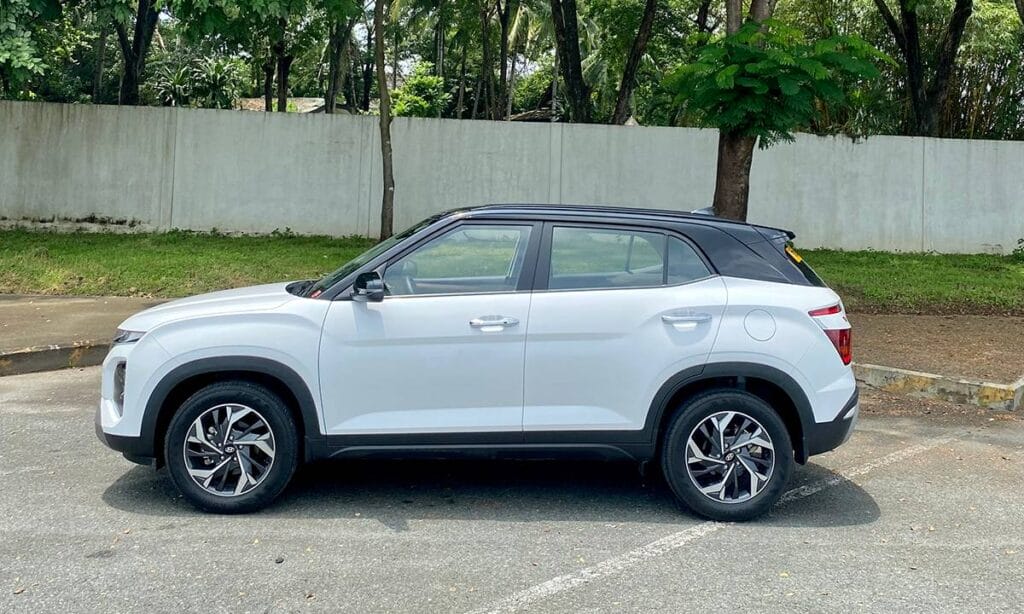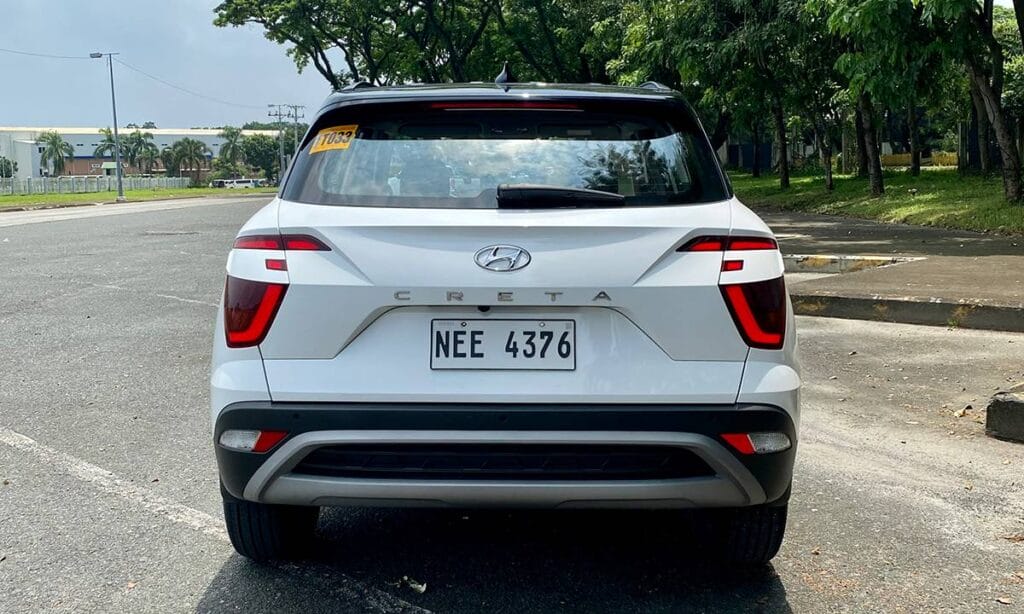The Creta is Hyundai’s latest subcompact crossover, taking over from the Kona and Venue. Size-wise and price-wise, it slots in above those two models but below the compact-sized Tucson in Hyundai’s global lineup.
The Creta name is said to be derived from the Greek island of Crete, somewhat following Hyundai’s tradition of naming its SUVs after places (i.e. Tucson, Santa Fe, Vera Cruz, Kona, Palisade).
At first I was confused as to why Hyundai Motor Philippines dropped the hot-selling Kona in favor of the Creta. But with the prices of the two models not so far from each other and the Creta notably bigger than the Kona, Filipino buyers would surely gravitate towards the better value.
That, plus a week of driving the Creta around Metro Manila (as well as a weekend drive to Clark), proved without a doubt that the Creta is the better entry-level model with its automatic-equipped GL variant starting price of P1,228,000 (the Creta actually starts at just P1,048,000 for the manual transmission GL, making it the lowest-priced Hyundai in the current local lineup).

I, however, got to drive the top-of-the-line GLS version, which stickers for P1,388,000. The GLS packs not just wireless Apple CarPlay, but also the Hyundai SmartSense suite of advanced driver-assist safety (ADAS) features.
Hyundai SmartSense includes Lane Keeping Assist, Lane Following Assist, Hill Start Assist, Blindspot Collision Avoidance Assist, Forward Collision Avoidance Assist, Rear Cross-Traffic Collision Avoidance Assist, plus a standard rear-view monitor and dual airbags.
Wireless Apple CarPlay and Android Auto lets you effortlessly connect your phone to the car, allowing you to use Spotify, Waze, Zoom, or any other smartphone app seamlessly.
Of course, the first thing that would draw a buyer to a particular car would be its styling. And here, the Creta doesn’t disappoint. Hyundai has always had one of the strongest automotive design identities in the last decade, thanks mainly to its highly successful Fluidic Design Sculpture.

Today’s Hyundais have lost their predecessor’s multiple character lines and mix of concave and convex surfaces on the doors and fenders, and have replaced that with more minimalist side panels and more expressive front and rear ends. There is now just one main character line that starts from the corner of the front bumper, gently arching over the front fender, traversing the doors, arching again over the rear fender, before terminating at the corner of the rear bumper.
The lower portions of the body are all in black, front the bottom of the front bumper, going up over the fender openings, running below the doors, and all the way around to the bottom of the rear bumper. It nicely ties up with the black-roof two-tone treatment of the GLS. A prominently thick D-pillar and striking two-tone machine-finish 17-inch alloy wheels nicely round up the distinctive side view of the Creta.

The Creta shares the bold yet finely detailed front ends of its bigger Tucson and Palisade siblings. Hyundai’s smooth-looking blacked-out Parametric Jewel-Pattern grille looks like it’s fully closed. A cool touch are the concealed DRLs that look like they’re part of the grille. The Creta retains the high-mounted slim lights and bumper-mounted headlamps (LEDs on the GLS) that the brand popularized with the Kona.
Perhaps the most controversial and polarizing design feature of the Creta are the LED taillights, which look like they’ve been bisected by a swath of body color paint in the middle. The net effect, however, mirrors the slim upper/thick lower lighting elements up front. It’s more pronounced if the Creta is in white or silver, but less so in red or black.
Overall, the Creta possesses a design that’s full of character yet doesn’t shout too much for attention.
Inside, the Creta has generous space for four—and even five, as long as the three rear passengers have slim to medium builds and aren’t overly long-legged. The seats are very comfortable, even on long drives. The front seats have prominent side bolsters to help keep you in place during spirited cornering. A breath of fresh air is the two-tone black-and cognac brown motif for the dashboard, door panels, and seats—a welcome departure from the usual all-black cabin.
Ergonomics are top notch; everything falls easily to hand for the driver. I particularly like the intuitive mix of physical knobs, buttons and switches that work with the GLS’ 8-inch touchscreen infotainment system and the automatic climate control with digital display. The GLS also boasts Hyundai’s gorgeous 10.25-inch Supervision TFT LCD instrument cluster that’s absolutely eye candy.
Other GLS exclusives are a cooling glove box, faux leather for seats and the tilt-and-telescope steering wheel, remote window opening and closing, smart key entry/locking, push-button engine start/stop, customizable voice recognition via Bluetooth, wireless smartphone charging, and cruise control. There is a 12V socket in front, USB ports for front and rear passengers, as well as AC vents for the rear.
Overall, the Creta’s dashboard, console, and controls make for a highly functional environment for a driver while the rest of the cabin, which has a lot of cupholders, cubbyholes and general storage areas, is a very pleasant place to be in.
On the road, the Creta surprised me with its energetic acceleration and agile handling. Having tested a V8-powered Chevrolet Tahoe just a couple of days before taking the keys of the Creta, I expected to have to make big adjustments to how deeply I need to step into the accelerator. Instead, the 115ps and 144 Nm from the Creta’s 1.5-liter inline-four naturally aspirated Smartstream gasoline engine proved to be eager accomplices in giving you all the speed you want—at least for everyday driving and even the occasional expressway jaunts. Acceleration, whether from a standstill or for overtaking a speeding bus on NLEX, is certainly more than adequate. You just have to have no qualms about stepping deeper into that rightmost pedal. The Creta will deliver.
Thankfully, the Creta’s Intelligent Variable Transmission (IVT), Hyundai’s version of the CVT, proved up to the task of immediately matching the right gear to the power and torque you need at any given time. The GLS also adds a nifty Drive Mode, which allows you to choose between Normal, Eco, Sport, and Smart modes. It also has a Traction Control mode, which adjusts the wheel slip control between the front left and right wheels.
Fuel consumption? The Creta averaged 8.5-9 kilometers per liter in everyday driving, stretching it to 12-14 km/l on a 100-km/h cruise on NLEX.
The Creta’s handling won’t disappoint those who know how to find the apex in a turn—minimal body roll and a very responsive steering with lots of feel. The good news is that the nimble handling doesn’t come at the expense of a stiff or harsh ride.
Stylish, fuel-efficient, fun to drive, reasonably spacious, loaded with comfort, convenience and safety features—the Hyundai Creta is one solid choice for a subcompact SUV. It’s no surprise then that it’s now one of the bestselling models in its class.

